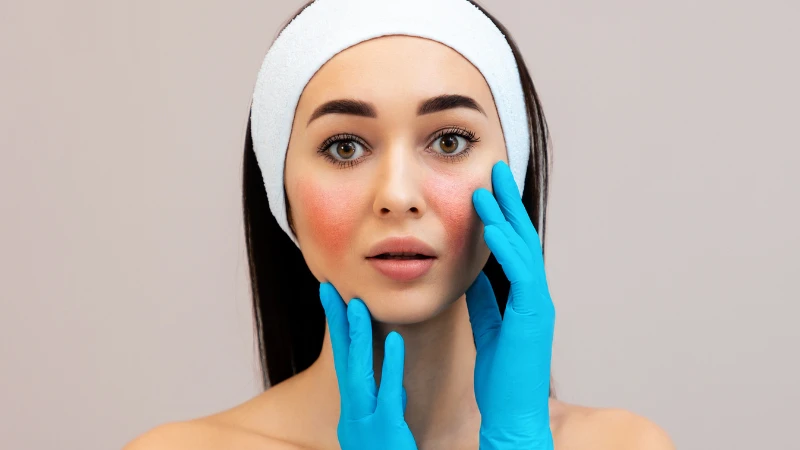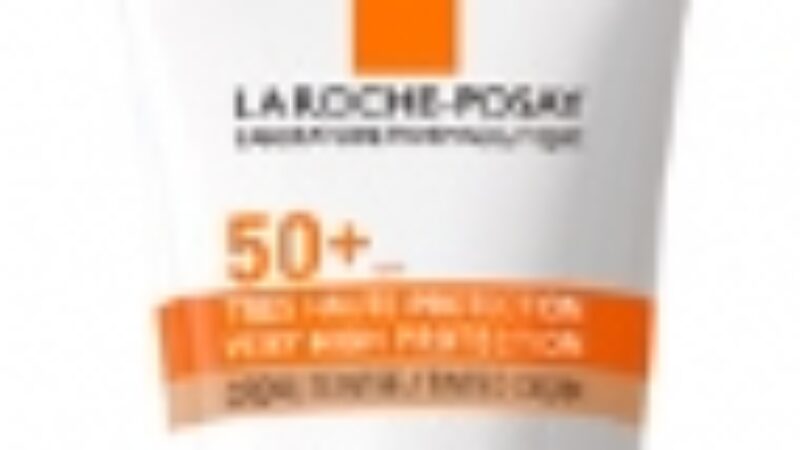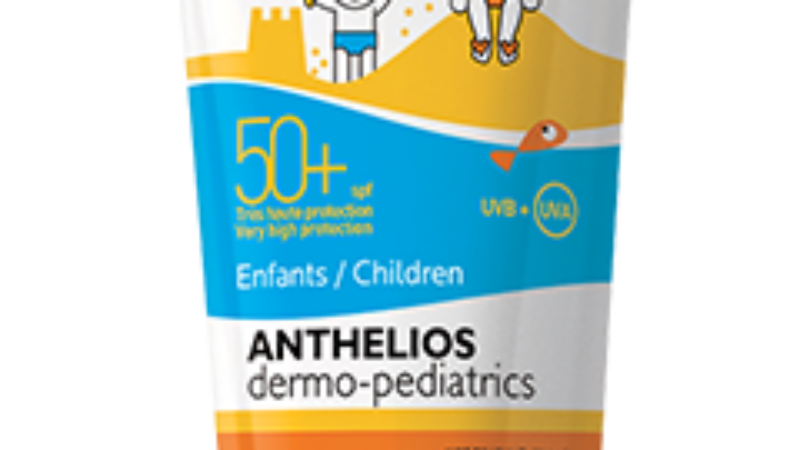You’ve no doubt stumbled upon a comedogenic ingredient list, or two—already, leaving you wondering if you’re inadvertently causing harm to your skin through your skincare routine.
If you’ve been battling breakouts or skin irritation, the culprit might be lurking within your products: comedogenic ingredients. Understanding and decoding a comedogenic ingredient list is the key to unlocking clear and healthy skin. Let’s delve into the details together and explore how you can take control of your skincare journey.
What Makes a Product Comedogenic?
Comedogenic ingredients are the potential troublemakers that can clog your pores, leading to blackheads and whiteheads. These include oils, waxes, and specific chemicals that hinder your skin from breathing properly. Identifying these ingredients is crucial for maintaining a radiant complexion, as clogged pores can give rise to acne and other skin issues.
How to Decipher a Comedogenic Ingredient List (and check if your products are problematic)
Deciphering ingredient lists can be intimidating, but it’s a skill worth acquiring. Familiarize yourself with common comedogenic ingredients like coconut oil, cocoa butter, and certain types of silicones. Pay attention to the order of ingredients; the higher up, the more concentrated. Also, watch out for alternative names for comedogenic ingredients, as they may be disguised under different terms. (And make sure to look at the list we’ve created for you down below, which provides a detailed description of ingredients that are particularly problematic).
What’s True of a Comedogenic Ingredient List?
Comedogenicity ratings can be given a number, ranging from 0 to 5, or a rating from low to high–check out the detailed list below. These ratings help assess the likelihood of an ingredient causing pore blockages. Higher ratings indicate a higher risk of clogging pores. The lower the number, the less likely it is that it will clog pores. Just because an ingredient is an oil or wax, does not necessarily mean that it is comedogenic; some oils and waxes are very well tolerated.
A product’s or ingredient’s comedogenicity is tested by applying it to the face of volunteers and evaluating the treated area with a high powered microscope. Understanding these ratings empowers you to make informed decisions while selecting skincare products. Remember, not all comedogenic ingredients affect everyone the same way, and individual tolerance levels may vary.
If you have sensitive skin, you may need to avoid more ingredients. If your skin tolerates most skin care products well, then many of these ingredients will not be problematic. Something that you may find interesting is that sodium lauryl sulfate, an ingredient often used in cleansers is problematic, but mineral oil is not.
How to Find Non-Comedogenic Products?
Now that you know what to avoid, let’s explore non-comedogenic alternatives. Hyaluronic acid, salicylic acid, niacinamide, aloe vera, and green tea extract are excellent choices for maintaining healthy skin without clogging pores. Remember, everyone’s skin is unique, so patch testing new products is essential to ensure compatibility and prevent potential allergic reactions.
Comedogenic Ingredient List: Common Culprits
Some ingredients are notorious for causing trouble. Coconut oil, cocoa butter, isopropyl myristate, sodium lauryl sulfate, and lanolin are high on the comedogenic scale. Be vigilant and check your product labels for these potential triggers. Understanding the comedogenicity ratings of these ingredients can guide you in making informed choices based on your skin’s needs.
Crafting a Skincare Routine That Minimizes Comedogenicity
Building a skincare routine that prioritizes clear and healthy skin involves several key steps. Start with a gentle, non-comedogenic cleanser to remove dirt, oil, and makeup without stripping your skin’s natural moisture. Incorporate a gentle exfoliant with salicylic acid or other non-comedogenic exfoliating agents to unclog pores and remove dead skin cells.
Choose a lightweight, non-comedogenic moisturizer that hydrates the skin without leaving a greasy residue. Apply a broad-spectrum sunscreen with at least SPF 30 to protect your skin from harmful UV rays and prevent sun damage. Additionally, consider adding targeted treatments, such as serums or spot treatments, that address specific skin concerns without clogging pores.
Natural and Organic Alternatives to Comedogenic Ingredients
If you prefer a natural–or what we like to call, a plant-based approach, consider alternatives like jojoba oil, rosehip oil, tea tree oil, shea butter, and witch hazel. These ingredients offer nourishment without clogging pores, and they come with additional benefits like soothing properties and antioxidants. Remember to patch test natural and organic alternatives to ensure they are suitable for your skin. Just because something is natural and/or organic, doesn’t mean it’s necessarily good for your skin!
The Importance of Patch Testing
Before introducing new skincare products, especially if you have sensitive skin, perform a patch test. Applying a small amount to a designated area allows you to monitor for adverse reactions over a 24 to 48-hour period. This step can help prevent potential issues like breakouts, irritation, or allergic reactions that may occur if the product contains comedogenic ingredients or other irritants.
Consulting a Dermatologist for Personalized Advice
While this guide and the comedogenic ingredient list below provides valuable insights, it’s essential to recognize that everyone’s skin is unique. If you’re dealing with persistent issues, seeking advice from a dermatologist ensures personalized recommendations and potential professional treatments. A dermatologist can assess your skin type, identify underlying causes of your skin concerns, and recommend specific products and treatments tailored to your needs.
Achieve Radiant Skin with Knowledge
Empower yourself with the understanding of comedogenic ingredients to achieve clear and healthy skin. Navigate ingredient lists with confidence, make informed choices, and consider natural alternatives. Patch test new products, develop a tailored skincare routine, and seek professional advice when needed. Unravel the secrets of comedogenic ingredient lists, and take charge of your skincare journey for the radiant skin you’ve always envisioned. Don’t let comedogenic ingredients sabotage your skin – with knowledge and informed choices, you can achieve the clear and healthy skin you’ve always dreamed of.
The Comedogenic Ingredient List
Keep in mind that the following comedogenic ingredient list is by no means exhaustive, but may help to shed some clarity on those that can be problematic.
| Ingredient | Comedogenicity |
| Acetylated Lanolin | High |
| Acetylated Lanolin Alcohol | High |
| Algae Extract | High |
| Algin | High |
| Bismuth oxychloride | High |
| Butyl Stearate | High |
| Carrageenans | High |
| Cetearyl Alcohol + Ceteareth 20 | High |
| Coal tar | High |
| Cocoa Butter | High |
| Coconut Butter | High |
| Coconut Oil | High |
| Colloidal Sulfur | High |
| Corn Oil | High |
| Cotton Aws Oil | High |
| Cotton Seed Oil | High |
| Crisco | High |
| D & C Red # 17 | High |
| D & C Red # 21 | High |
| D & C Red # 3 | High |
| D & C Red # 30 | High |
| D & C Red # 36 | High |
| Decyl Oleate | High |
| Dioctyl Succinate | High |
| Disodium Monooleamido PEG 2-Sulfosuccinate | High |
| Ethoxylated Lanolin | High |
| Ethylhexyl Palmitate | High |
| Glyceryl Stearate SE -MUST have SE after the stearate | High |
| Glyceryl-3-Disostearate-(MUST have a “3” with it) | High |
| Hexadecyl Alcohol | High |
| Hydrogenated Vegetable Oil | High |
| Isocetyl Stearate | High |
| Isodecyl Oleate | High |
| isoproply linoleate | High |
| Isopropyl Isosterate | High |
| Isopropyl lanolate | High |
| Isopropyl Myristate | High |
| Isopropyl Palmitate | High |
| isostearic acid | High |
| isostearyl acid | High |
| Isostearyl Isostearate | High |
| Isostearyl Neopentanoate | High |
| lanolic acid | High |
| Laureth 23 | High |
| Laureth 4 | High |
| Lauric Acid | High |
| Linseed oil | High |
| Mink Oil | High |
| Myreth 3 myrstate | High |
| Myristic Acid | High |
| Myristyl Lactate | High |
| Myristyl Myristate | High |
| Octyl Palmitate | High |
| Octyl Stearate | High |
| Oleic Acid | High |
| Oleth-3 | High |
| Oleyl Alcohol | High |
| PEG 16 Lanolin | High |
| PEG 200 Dilaurate | High |
| PEG 8 Stearate | High |
| PG Monostearate | High |
| Polyglyceryl-3-Disostearate (the “3” must be present) | High |
| Potassium Chloride | High |
| PPG 2 Myristyl Propionate | High |
| Propylene Glycol Monostearate | High |
| Red Algae | High |
| Salt – Table Salt or Sodium Chloride | High |
| Shark Liver Oil | High |
| Sodium Laureth Sulfate | High |
| Sodium Lauryl Sulfate | High |
| Solulan 16 | High |
| Sorbitan Oleate | High |
| Sorbitan Sesquinoleate | High |
| Soybean Oil | High |
| Steareth 10 | High |
| Stearic Acid Tea | High |
| Stearyl Heptanoate | High |
| Sulfated Castor Oil | High |
| Sulfated Jojoba Oil (NOT Jojoba beads) | High |
| Syearyl Heptanoate | High |
| Wheat Germ Glyceride | High |
| Wheat Germ Oil | High |
| Xylene | High |
| Almond Oil | Medium |
| Apricot Kernel Oil | Medium |
| Arachidic Acid | Medium |
| Ascorbyl Palmitate | Medium |
| Avocado Oil | Medium |
| Azulene | Medium |
| Behenic acid | Medium |
| Benzaldehyde | Medium |
| Benzoic Acid | Medium |
| BHA | Medium |
| Butylated Hydroxyanisole (BHA) | Medium |
| Cajeput Oil | Medium |
| Camphor | Medium |
| Capric Acid | Medium |
| Caprylic acid | Medium |
| Cetearyl Alcohol | Medium |
| Cetyl Alcohol | Medium |
| Chamomile | Medium |
| D & C Red # 19 | Medium |
| D & C Red #27 | Medium |
| D & C Red #40 | Medium |
| Evening Primrose Oil | Medium |
| Grape Seed Oil (extract is OK) | Medium |
| Hexylene Glycol | Medium |
| Octyldodecanol | Medium |
| Oleth-10 | Medium |
| Olive Oil (Olive Oil Extract is OK) | Medium |
| Palmitic Acid | Medium |
| Peach Kernel Oil | Medium |
| Peanut Oil | Medium |
| PEG 100 Distearate | Medium |
| PEG 150 Distearate | Medium |
| Peg 75 lanolin | Medium |
| Pentarythrital Tetra Isostearate | Medium |
| PG Dipelargonate | Medium |
| PG Dipelargonate | Medium |
| Sandalwood Seed Oil | Medium |
| Sesame Oil | Medium |
| Steareth 2 | Medium |
| Steareth 20 | Medium |
| Stearic Acid | Medium |
| Stearyl Alcohol | Medium |
| Tocopherol (Tocopherol Acetate is OK) | Medium |
| Triethanolamine | Medium |
| Vitamin A Palmitate-(ONLY this form of Vitamin A) | Medium |
| Avocado Oil | Low |
| Castor Oil | Low |
| Corn Oil | Low |
| D & C Red Number 4, 6, 7 or 8 | Low |
| Glyceryl Stearate | Low |
| Lanolin | Low |
| Lanolin Alcohol | Low |
| Lauryl Alcohol | Low |
| Mineral Oil | Low |
| Safflower Oil | Low |
| Sunflower Oil | Low |




